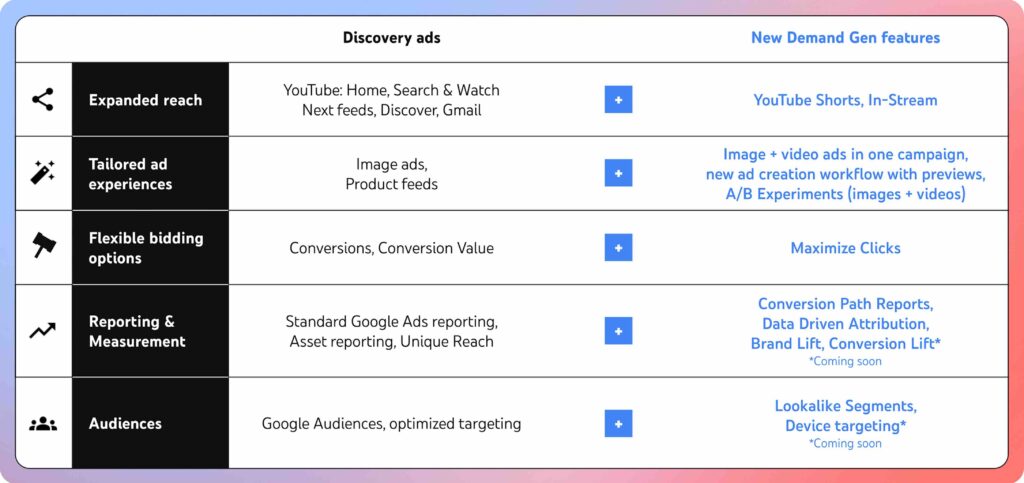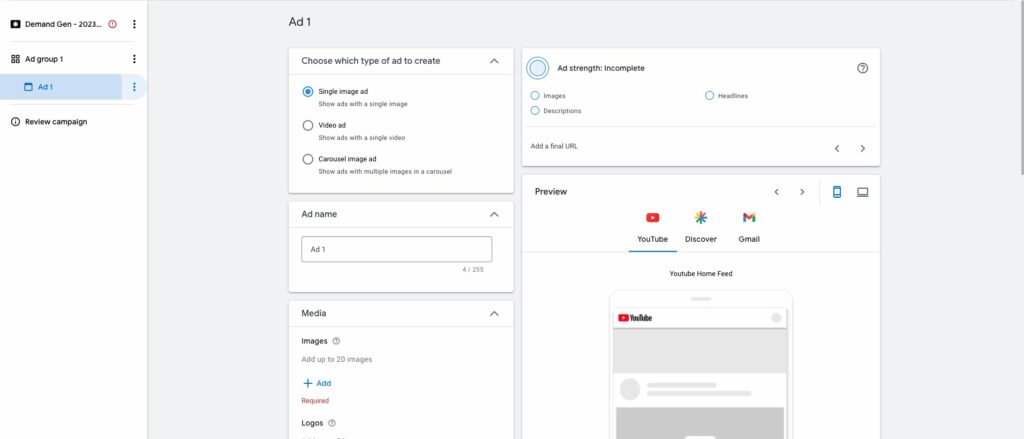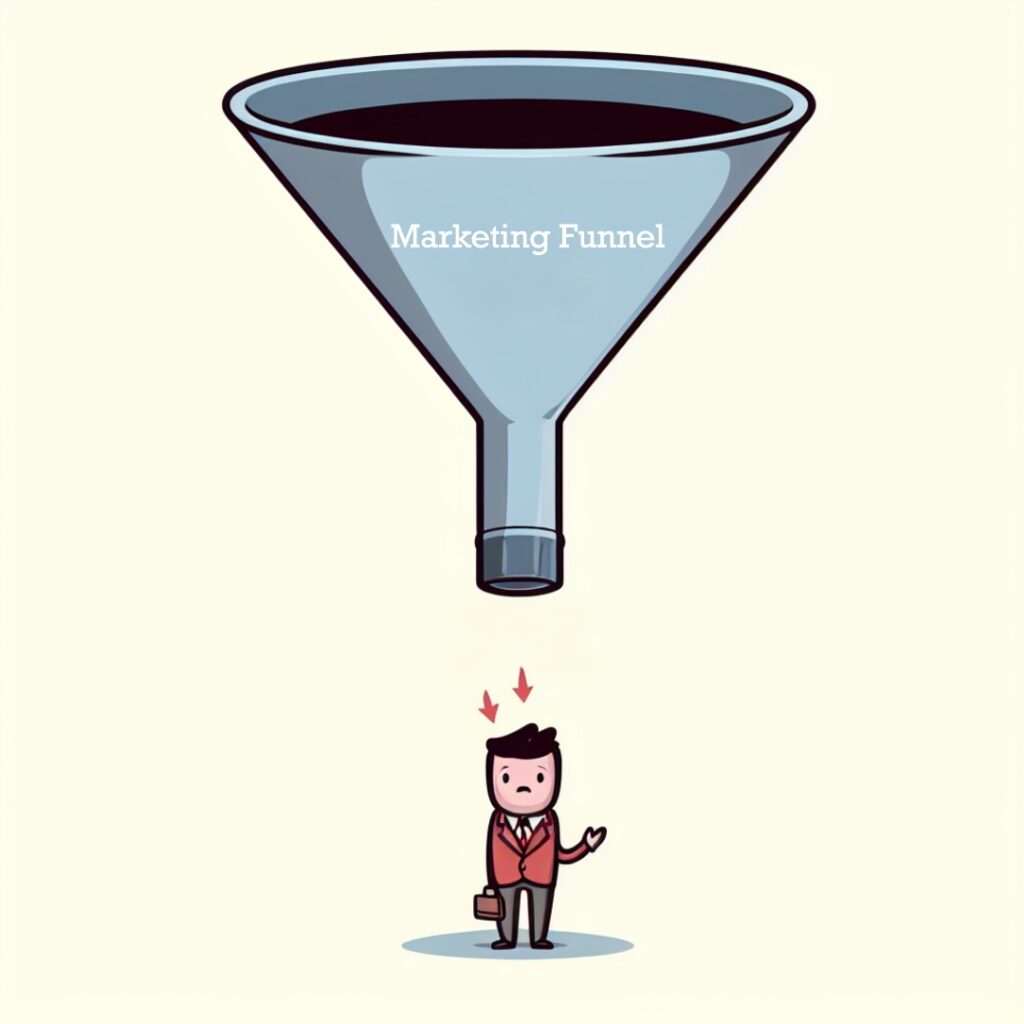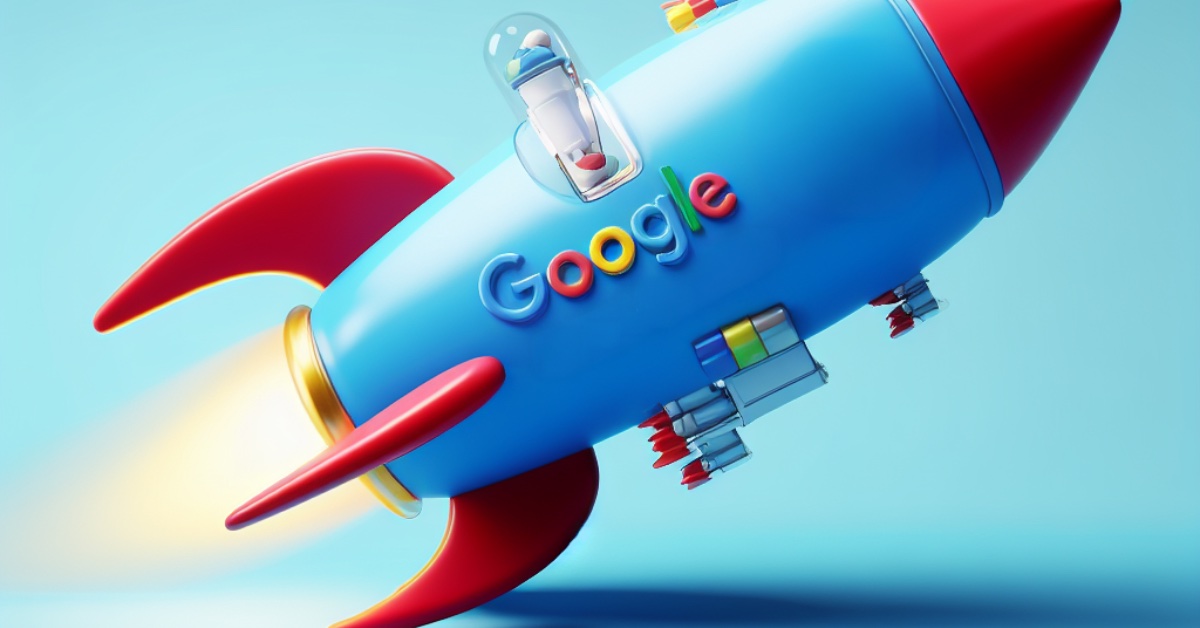Google announced Demand Gen campaigns during the Google Marketing Live 2023 event. Like Discovery Campaigns, they’re designed to expand beyond traditional text-based search results and reach consumers on more visually engaging platforms.
The new campaign type takes advantage of placements on YouTube, Discovery, and Gmail, which collectively boast over 3 billion monthly users. The aim is to capture the attention of potential customers before they initiate a search, with Google reporting that 91% of consumers have taken action after discovering a new brand on these properties.
“Demand Gen is the next generation of Discovery campaigns…”
– Vidhya Srinivasan, VP & GM in Google Ads (Search Ads & Ads on Google Experiences)
Initially launched as a Beta, Demand Gen campaigns are now accessible to all customers. These campaigns are referred to as the “next generation of Discovery campaigns” and come with a range of new features, expanded inventory options, valuable insights, and an improved ad creation process. This update reflects Google’s trend of leaning into AI and moving away from optimizing campaigns through manual changes made by advertisers.
Table of Contents
Understanding Demand Gen Campaigns
Unlike traditional search ads, Demand Gen campaigns are all about catching the attention of potential customers before they actively search for a brand. These campaigns target users across Google’s more visually engaging platforms to cast a wider net and tap into new audiences.
For social marketers accustomed to platforms like Facebook and TikTok, Demand Gen campaigns may seem familiar. It’s like a bridge between social media marketing and Google Ads, relying on audience targeting and offering new features specific to the campaign type.
A natural expansion of Discovery campaigns, Demand Gen, includes Discover, Gmail, and YouTube placements but includes the addition of new YouTube inventory like YouTube Shorts. Like Performance Max, this new campaign type harnesses the power of AI to tap into a larger audience encouraging them to engage with new products.
How Demand Gen Campaigns Differ from Discovery Campaigns

Google’s new Demand Gen campaigns share several similarities with its predecessor, Discovery campaigns. Both target new audiences across Gmail, YouTube, and the Google Discovery Feed. They also use ads that resemble common social ad formats. However, Demand Gen campaigns offer significant enhancements.
Video Assets
With the transition from Discovery to Demand Gen comes the promise of more creative and inventory options. While Discovery campaigns only allowed images, carousels, or product data feed for creatives, Demand Gen includes the addition of video assets. These can be used in placements across YouTube videos, Shorts, and connected TV, giving advertisers more flexibility to create content that resonates with their audience.
Machine Learning and Lookalike Audiences
Another change is the shift toward automation and machine learning. Demand Gen leans into these technologies, similar to Performance Max, which focuses on full-funnel marketing. However, these campaigns primarily concentrate on raising awareness and filling the top end of your marketing funnel.
Demand Gen also introduces Lookalike segments, a feature familiar to those acquainted with Meta Ads. This involves seeding the system with a list of existing customers, email subscribers, or website interactions and targeting individuals who closely match these profiles.
Google has been clear that Demand Gen is here to replace Discovery campaigns, and by January 2024, all remaining Discovery campaigns will automatically upgrade. Google has stated that the transition will require no action from the advertiser and that existing campaigns will continue to serve in the new format with data remaining intact.
What to Expect with Demand Gen
Demand Gen represents Google’s latest effort to help advertisers generate demand rather than simply capture it.
This shift is evident in the campaign’s interface, which resembles paid social campaigns, drawing parallels with how Meta Ads structures its products. Rather than adding all assets into one ad like Performance Max, advertisers chose from a single image, video ad, or carousel ad in the creation process.

Advertisers should consider that their CPAs and return on ad spend will most likely be higher than what they see with paid social campaigns. This reflects the different nature of generating demand through Google products like YouTube and Gmail as opposed to other platforms.
While Demand Gen might not immediately drive bottom-of-funnel conversions, it has the potential to uncover new audiences and spark interest in your offerings.
Benefits of Google Demand Gen Campaigns
Demand Gen campaigns offer a range of exciting features and opportunities for advertisers.
- Access to new inventory: Demand Gen campaigns provide a broader reach by including YouTube In-Stream and YouTube Shorts. Incorporating short-form and long-form video ad content significantly enhances the potential audience reach on YouTube.
- Creative Tests A/B Experiments: Advertisers can conduct A/B experiments to test different image and video creatives, gaining valuable insights into audience preferences and continually improving campaign results.
- Smart Bidding Flexibility: Demand Gen campaigns offer the same smart-bidding options as Google Discovery Ads, such as “maximize conversions” and “maximize conversion value.” However, they also allow advertisers to use “maximize clicks” as a bid strategy.
- Measure Incremental Lift: Demand Gen campaigns provide valuable reports, including Brand Lift, Search Lift, and Conversion Lift reports. These insights offer insights into how their campaign impacts brand awareness, search activity, and conversions, providing a comprehensive view of campaign performance. Given the expectation that ROAS will be lower, this data is invaluable for tracking the success of your campaigns.
- Lookalike Audiences: These segments are based on the characteristics and behaviors of existing first-party audience segments built on audience data from past purchases, website and app activity, or YouTube engagement. Advertisers can define lookalike audiences similarly to Meta Ads, creating them based on narrow, balanced, or broad criteria, giving them more control over audience definition.
- Product Feeds for Retailers: Retailers can enhance their campaigns by combining videos with images and text from their catalogs. This allows them to display products that match users’ interests and search intent, providing a more personalized shopping experience.
Building a Google Demand Gen Strategy

To make the most of your campaigns, you must do the proper prep work and maintain realistic performance expectations. Here are a few things to remember when building out your campaign.
Preparing Your Audiences
To take advantage of first party audiences, they must have at least 1,000 unique matched users. This threshold is necessary for creating a lookalike audience. For large and enterprise-sized businesses, this may be fine. But planning ahead by bolstering your audience lists is crucial for smaller companies.
This might involve ramping up website traffic to accumulate sufficient data for crafting a lookalike audience. It may be a good idea to focus on increasing website traffic to gather enough data for lookalike audience creation.
Preparing Creative
Advertisers can choose from 3 different ad types: Single Image Ad, Video Ads, and Carousel Image Ads. Each ad type has its own set of available placements.
| Ad Type | YouTube In-Feed | YouTube In-stream | YouTube Shorts | Discover | Gmail |
| Image Ad | Mobile, Desktop | N/A | Mobile | Mobile | Mobile, Desktop |
| Carousel Ad | Mobile | N/A | N/A | Mobile | Mobile, Desktop |
| Video Ad | Mobile, Desktop, CTV | Mobile, Desktop, CTV | Mobile | Mobile | N/A |
Setting a Your Bid and Budget:
Bidding and Budget Recommendations:
When deciding on a bid strategy, advertisers have the option of choosing from:
- Maximize Clicks
- Maximize Conversions
- tROAS (Target Return on Ad Spend
- tCPA (Target Cost Per Action)
Google has provided recommendations for setting your Demand Gen bidding and budget goals.
- Your Target CPA should be set at 2x your normal CPA.
- Daily budget should be 15x your Target CPA.
These benchmarks are suggested to allow the campaign room to operate and find new interested audiences. However, these recommendations might not be feasible for accounts with smaller budgets.
Timeline for Success
Google advises giving Demand Gen campaigns between four and six weeks to factor in conversion delays and allow for a learning period for data gathering.
Demand Gen’s Fit Within Accounts

Demand Gen campaigns work best in accounts that have already maximized their Search, Shopping, and Performance Max campaigns. Increasing interest through higher funnel campaigns makes sense if your account is already maximizing capture. However, smaller advertisers with limited budgets may not drive enough conversions to justify long-term use.
Stakeholder Buy-In
Convincing clients and internal stakeholders to embrace upper-funnel tactics can be a challenge. Some may be enthusiastic about exploring new opportunities. For these stakeholders, presenting the first-mover advantage can be a persuasive argument. However, it may be a harder sell if they are laser-focused on bottom-funnel metrics and conversion efficiencies.
Measuring Success
Demand Gen is distinct from other campaign types, aiming to reach new audiences. Therefore, it’s reasonable to expect fewer conversions with a higher CPA or lower ROAS. As such, it should not be evaluated using the same metrics as Search or Performance Max campaigns.
In larger accounts, allocating a portion of the budget to cater to upper-funnel audiences is always advisable. It’s vital to ensure that conversions are incremental and that you generate net new awareness through ad impressions, video views, and website visits. While higher funnel tactics are essential in any marketing mix, they come at a cost and should be viewed as an investment in expanding your audience.
Conclusion
Demand Gen is an exciting addition to Google’s collection of advertising products. New placements and features make it a meaningful upgrade to Discovery campaigns.
While promising, whether or not the campaign type works for a business depends on its goals. Adding Demand Gen into your advertising strategy requires careful consideration of your audience size, budget, long-term goals, and stakeholder expectations.


Leave a Reply